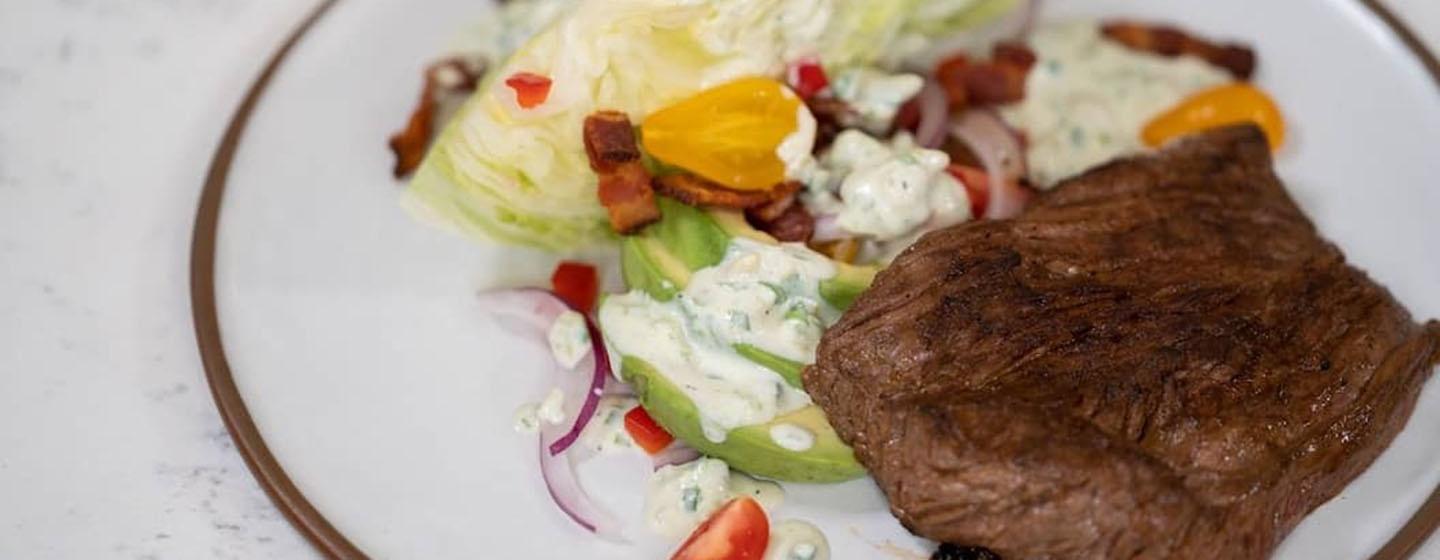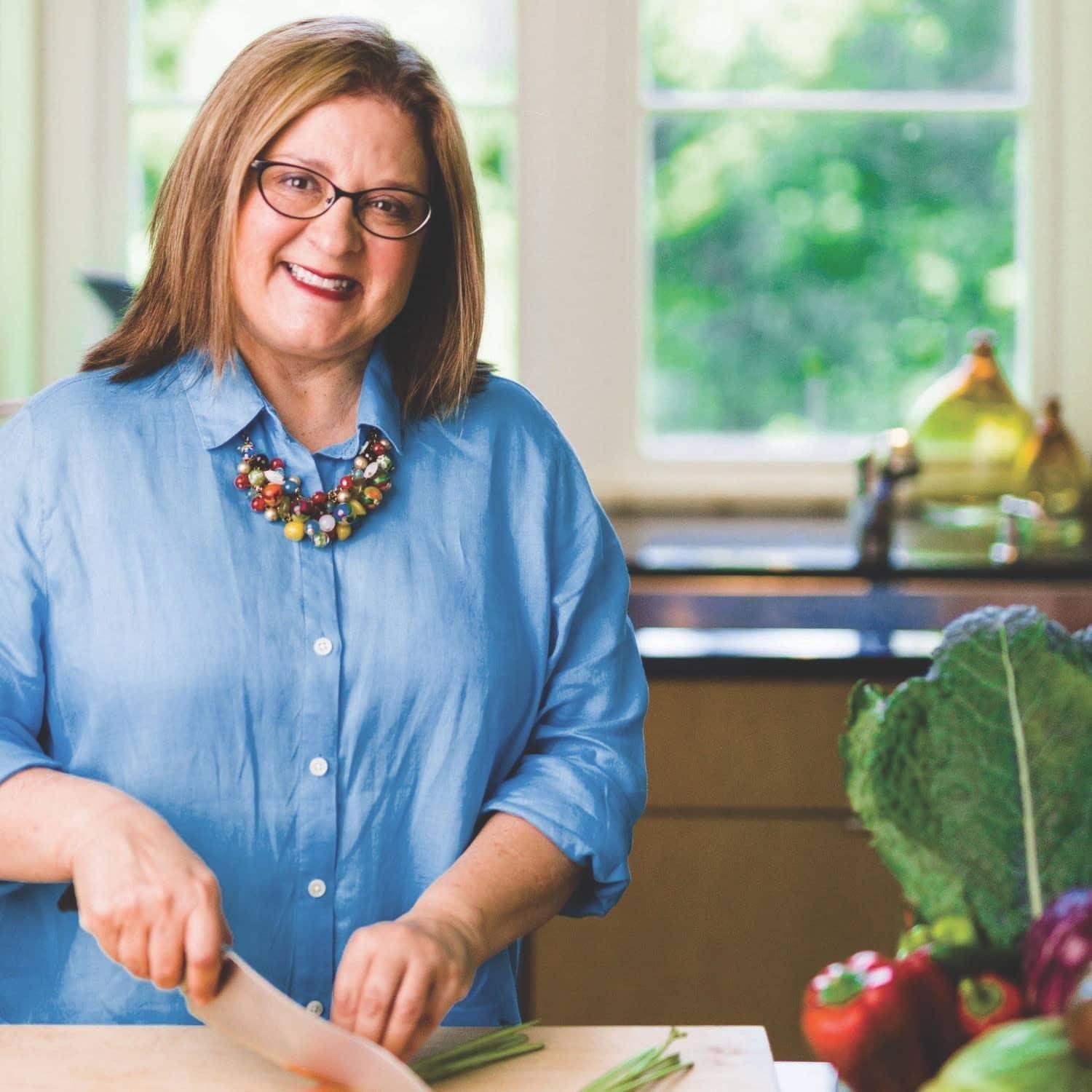Buttermilk Brined Southwestern Skirt Steak


Many of us are familiar with buttermilk fried chicken, but might not have considered soaking skirt steak in richly seasoned buttermilk brine, which adds flavor and tenderizes this flavorful, but chewy, beef cut. (If you can’t find skirt steak, ask the butcher to recommend something similar, such as hanger, flat iron, or flank steak.) I like to serve this well-seasoned skirt steak with a great wedge salad and creamy buttermilk dressing (yep, homemade ranch), but it also makes fantastic fajitas and sandwiches.
The key to this and all buttermilk-based recipes is to use real liquid buttermilk. It contains good-for-us natural cultures (similar to those used to make yogurt and sour cream) that work culinary magic that milk curdled with lemon or vinegar cannot replace.
Buttermilk keeps longer than most dairy products, usually several days past the “freshness date.” It often separates as it sits in the fridge, but if you can shake it back together, it’s still good to use. You can also freeze leftover buttermilk in airtight containers, and let it thaw in the fridge.
Makes 4 to 6 servings.
Whisk together the buttermilk, spices, lime zest, and lime juice in a large, shallow container or a large sealable freezer bag.
Submerge the skirt steak in the buttermilk mixture, turning the pieces to ensure they’re coated. Cover or close tightly and refrigerate at least overnight and up to two days.
Remove the meat, blot dry with paper towels and discard the marinade. It’s important to remove the liquid so that the meat will sear instead of steam when it hits the hot pan.
Heat the oil in a large, cast-iron skillet over medium-high heat.
Working in batches, arrange the steak in a single layer in the skillet. Cook undisturbed until seared on the bottom, 2 to 3 minutes. Flip with tongs and sear the other side. Be patient; a good sear is key to flavor. A delicious dark brown glaze (called a fond) will develop on the bottom of the pan, and we don’t want to waste a drop or leave it behind. After the meat is seared, pick up each piece with the tongs and use it to mop and deglaze the pan. If the glaze starts to scorch or refuses to loosen, reduce the heat and splash a few drops of water off your fingertips into the bottom of the pan.
Transfer the seared meat to a cutting board and pour any pan juices over the top. Let stand for 5 minutes.
Cut on steak the diagonal into thin strips and serve warm. Tougher beef cuts are often rectangular, a visual cue that tells you that they’ll have the best texture when cut on the diagonal.
Some people poke fun at iceberg lettuce, but a chilled wedge is the perfect crisp, crunchy, sturdy base for the thick creamy dressing that would swamp little leafy greens. You can, of course, play around with the salad toppings, although I’m fond of familiar favorites here.
Makes 4 to 6 servings.
Divide the lettuce wedges, among chilled serving plates. Spoon dressing over the wedges and top with the avocado, tomatoes, bell pepper, onion, and bacon, if using. Serve at once.
Note: Halved romaine or mini iceberg heads also work well.
I like to make this dressing in a jar with a tight-fitting lid so that I can quickly and easily shake it together, and then stash any leftovers in the fridge.
Makes about 2 cups.
Combine the buttermilk, mayonnaise, sour cream, in a large glass jar with a tight-fitting lid. Cover and shake well to blend.
Peel and pit the avocado, mash well with a fork, and add to the jar.
Add the remaining ingredients and shake well.
Refrigerate until chilled, at least 2 hours and up to 1 week. Shake well and check the seasoning before serving.
Variation: To make killer Blue Cheese Dressing, omit the avocado, jalapeno, and lime, and add 1/2 cup crumbled high-quality blue cheese.
Buttermilk holds magical powers for tenderizing skirt steak. Plus, avocado salad dressing.

Sheri Castle, award-winning food writer and cooking teacher, is known for melding culinary expertise, storytelling and humor, so she can tell a tale while making a memorable meal. Her creative, well-crafted recipes and practical advice inspire people to cook with confidence and enthusiasm. She's written a tall stack of cookbooks and her work appears in dozens of magazines. In 2019, the Southern Foodways Alliance named Sheri among Twenty Living Legends of Southern Food, calling her The Storyteller.
Sheri says that she's fueled by great ingredients and the endless pursuit of intriguing stories, usually about the role that food plays in our lives, families, communities and culture.
When she steps away from the kitchen or a local farm, Sheri enjoys spending quiet time at her home near Chapel Hill. She hails from the Blue Ridge Mountains of North Carolina.